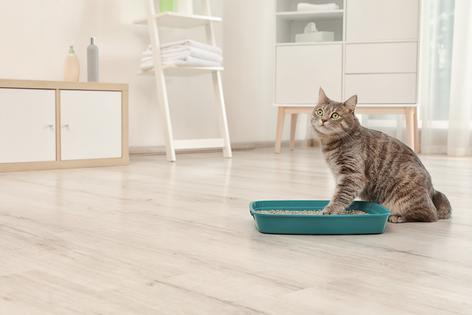My Pet World: Cat’s behavior offers hint on how to train him to use the litter box
Dear Cathy,
I have a cat that appeared at my door about seven years ago. He has now become an indoor/outdoor cat. He has been neutered and has his yearly check-ups at the vet. He sleeps indoors some days and some nights but will not use a litter box. I find myself running home to let him out any afternoon he is inside, plus he wakes up in the middle of the night to be let out. Is there any way to train him to use a litter box? He uses one when he is confined at the vet's office when he is boarded. – Barbara, Hollywood Florida
Dear Barbara,
You provided an important hint in your letter. You indicated that your cat uses a litter box when boarded at the vet’s office. Leave him in the bathroom with a small bed, water bowl, food bowl, and litter box when you’re not home. I also would add a litter box attractant (available online) to the litter to help draw him to the box. And don’t come home during the day to let him out. Let’s see if he learns to use the litter box when confined to a smaller space.
Dear Cathy,
A reader recently asked whether to rehome her pets as she was moving from New York to the west coast. You advised her to plan a car trip with her pets and gave good advice on how to do that. I’d like to propose another solution. Have a trusted friend/family member care for her pets while she travels to the new home. Then, fly the pets to the new home. This eliminates the possible escape from the car during the trip and avoids any vehicle breakdowns with a carload of pets. A vet can prescribe doggie/kitty valium for the flight, and a direct flight would be best. We did this with our Labrador when we moved from San Diego to Virginia. – Beverly, Hampton, Virginia
Dear Beverly,
Thank for your sharing your firsthand experience flying a pet during a move. Flying is definitely a reasonable option for moving pets over long distances, and I have done it on two occasions for long distance moves.
There is one caveat though. The FAA won’t fly pets if the temperature is above 85 degrees or below 45 degrees for more than four hours at either airport. If someone wants to fly their pets, they just need to consider the weather at that time of the year and whether their pet is a candidate for air travel. While medication can help a mildly anxious pet with the flight, severely anxious pets usually don’t do well with air travel.
Dear Cathy,
...continued
(c) 2021 DISTRIBUTED BY TRIBUNE MEDIA SERVICES, INC.










